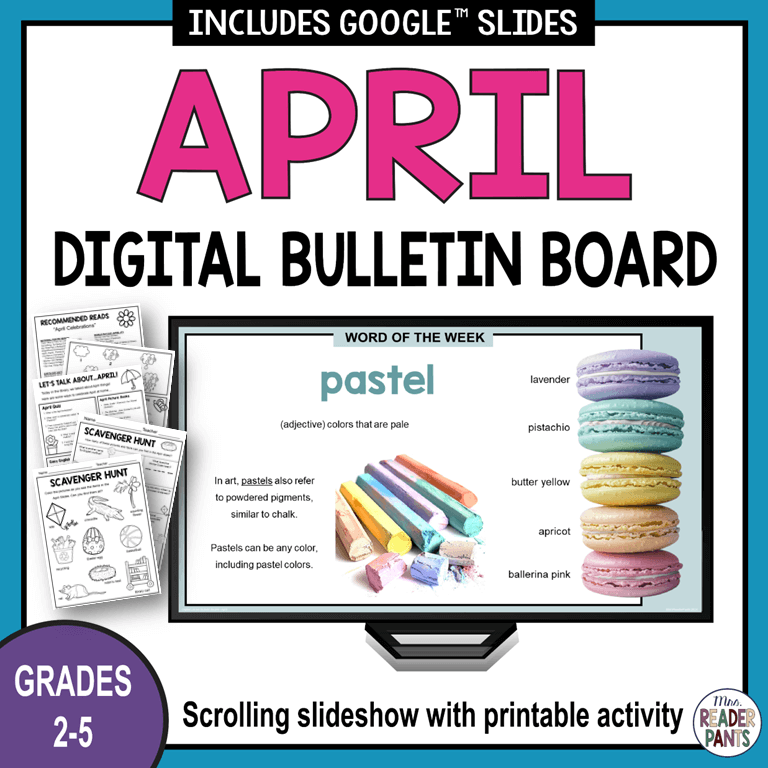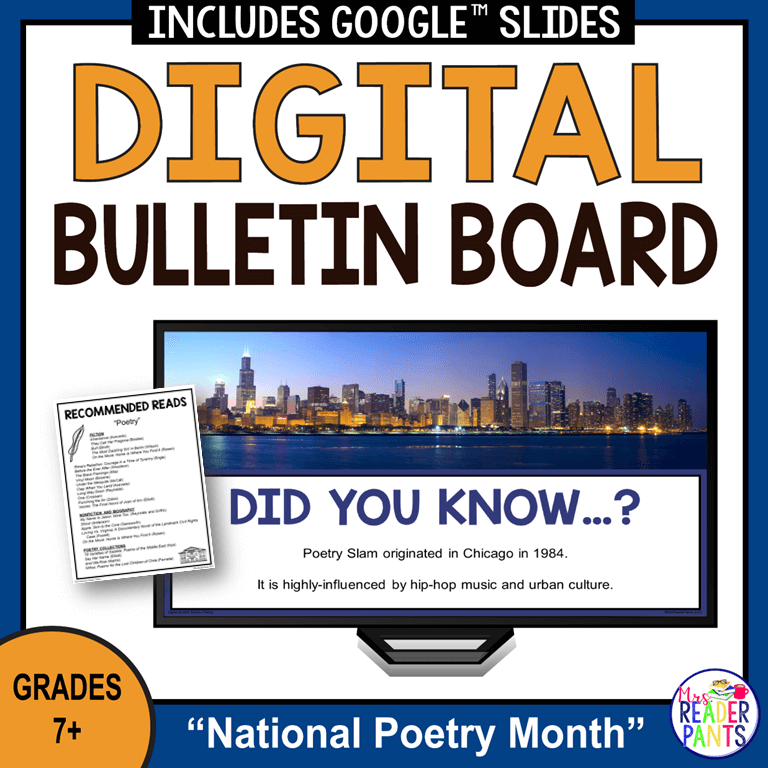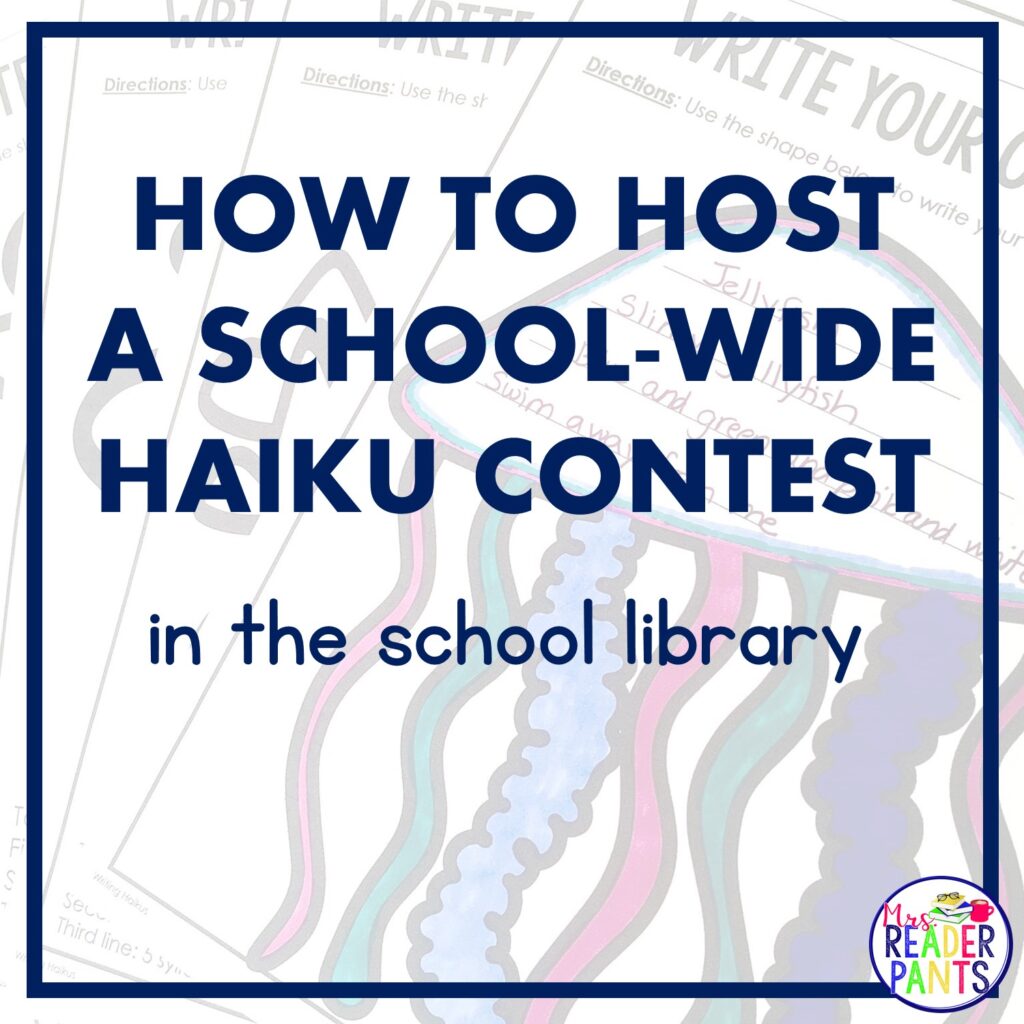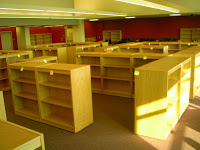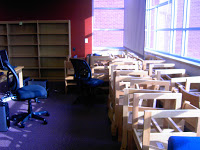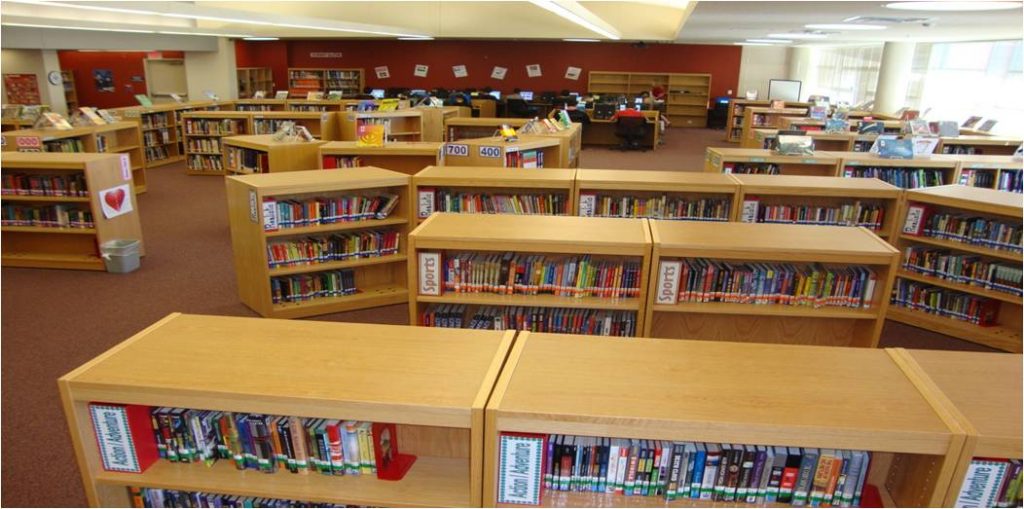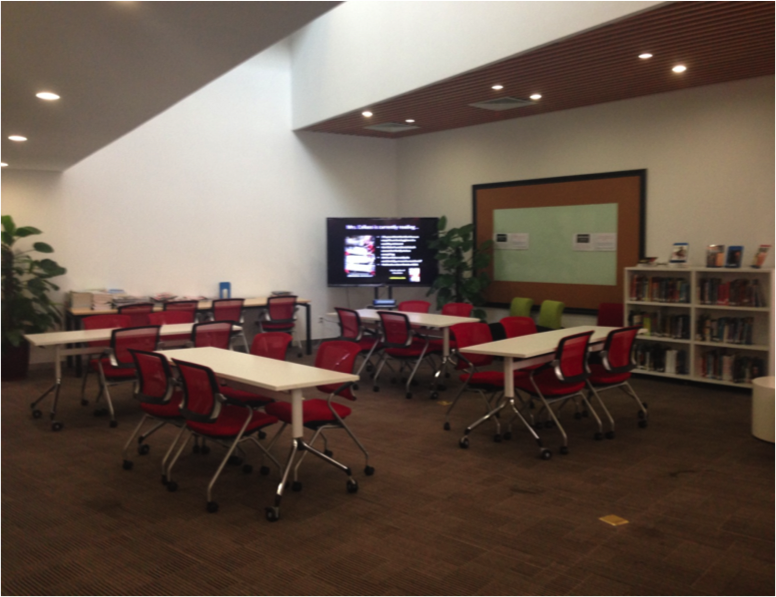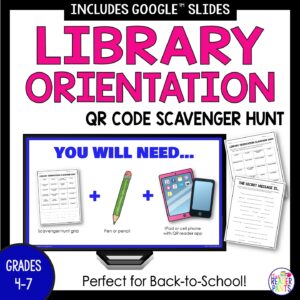 You’ve landed a brand new school librarian job–congratulations! All summer, you’ve looked forward to standing in the middle of your very own library, taking a deep breath, and reveling in all that library-awesomeness.
You’ve landed a brand new school librarian job–congratulations! All summer, you’ve looked forward to standing in the middle of your very own library, taking a deep breath, and reveling in all that library-awesomeness.
Fast-forward to August. Today, you are standing in the middle of your library, feeling pretty lost.
There are boxes everywhere, and you aren’t even sure if all this stuff is yours.
The computers are covered with plastic bags, and they do not look anywhere close to hooked up.
A teacher just came in and asked for the password to PebbleGo–where could that possibly be?
Another teacher came in to checkout some books, but you’ve received no training about how to use the circulation system.
In fact, you’ve received no guidance from anyone. When you were a teacher, you could just go next-door and ask your team to point you in a direction, but now, you are it.
A team of one. Uno. Solamente. ![]()
Honey, we have all been there. This post was actually inspired by a question posted on Elementary Librarian’s FaceBook page, as well as several similar questions I’ve seen recently on LM_Net. I can distinctly remember feeling overwhelmed, anxious, and completely alone in my first few days. Back in August 2004, I was super-excited to become a librarian, but I was also five months pregnant with my first child, exhausted, and clueless about where to start in my brand new school library. I didn’t know who to ask or even what to ask.
Hang in there–it will get better! For now, here’s a little boost: ten things new librarians should do first. Other than the first two, which really should be done before anything else, these ten “firsts” are not in any particular order.

NEW SCHOOL LIBRARIAN TIP #1: PREPARE YOURSELF AND YOUR CIRCULATION AREA FOR CHECKOUT.
As a new school librarian, you will need to wear many hats. But let’s face it, when most people think of librarians, they think of book circulation first.
I made this task #1 because, even if the entire library is in complete shambles right now, your teachers will need to checkout books. It may be your first day back, but many teachers have been working in their classrooms for weeks. They’ve been planning all summer. They’ve had their eye on certain library books and have been waiting for you to come in and check them out. Know this, and be ready:
- Prepare your circulation station. At a minimum, you need a computer, a library management system/OPAC, and a login. A barcode scanner is also super-important, but you can technically check out books without one (just type in the barcode number instead of scanning).
- If you do not have these things, make it a priority to get them. Ask questions and keep asking them until you get what you need.
- Make sure you know how to do basic circulation tasks–checkout, check in, and search the catalog.
- If gathering your materials takes longer than expected, prepare a manual checkout system and be ready to use it if needed.
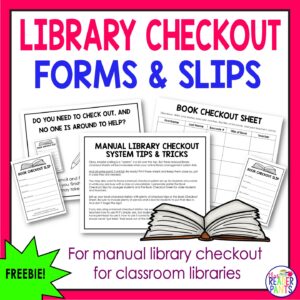
Don’t have any manual check out sheets? Use mine!
I created these cute manual checkout forms and slips, which will work for any grade level. In a pinch, however, you could also just use a plain-ol’ spiral notebook, particularly for your teachers or in secondary schools.
Grab my FREE manual checkout forms & slips

NEW SCHOOL LIBRARIAN TIP #2: TAKE PHOTOS.
Your new school library will change a lot in your time there, and you will want to document that. It’s fun to look back at that weirdly-placed shelf you moved or that totally blank wall that is now a beautiful mural. Plus, you can use these photos later to show added-value or in a future job portfolio.
If you are really feeling adventurous, take a video as you walk through the library, commenting on what you like and don’t like. No one has to see it unless you want them to!
From my first middle school library opening…
 NEW SCHOOL LIBRARIAN TIP #3: FIND THE LIBRARY HANDBOOK.
NEW SCHOOL LIBRARIAN TIP #3: FIND THE LIBRARY HANDBOOK.
The library handbook may be difficult to find. A printed library handbook is likely in a binder, which may or may not be marked as “Library Handbook.” Look behind the librarian’s desk area, around the circulation desk, and possibly, in the principal or vice-principal’s office.
If you don’t find it, check the district website as it may be 100% online. Or it may not exist at all. I’ve seen huge variances in library handbooks, from nothing at all to a scant two-page document (seriously, why bother?) to a binder filled with more than 100 pages.
Once you find the library handbook, take it home and read sections on collection development, circulation policies, and procedures for challenged materials. If the printed library handbook conflicts with the online handbook–especially if the online handbook is on the district website–then the online version is the one you’ll want to go with.
Don’t have a library handbook, or need a complete revamp?
 I’ve got one! I created the elementary and secondary library handbooks specifically for MrsReaderPants–They are not from any school or district I’ve worked for or consulted with.
I’ve got one! I created the elementary and secondary library handbooks specifically for MrsReaderPants–They are not from any school or district I’ve worked for or consulted with.
The elementary and secondary library handbooks are not that much different from one another.
If you buy one and also want the other, please just email me with your order number and whether you purchased here on on TPT. I’m happy to send it to you free of charge.
NEW SCHOOL LIBRARIAN TIP #4: CREATE A TENTATIVE LIBRARY SCHEDULE.
As you meet people, ask questions about library scheduling expectations. What was the schedule like last year? Did it work for teachers? Students? The librarian? Are you expected to offer a flex or fixed schedule? Who makes the schedule? Do teachers stay in the library with students, or are you on the specials rotation?
Even if you are on a specials rotation with PE, music, and art, you still need to figure out when you will do administrative tasks such as shelving books, ordering new materials, cataloging, planning lessons, etc.
If you are on a flex schedule, teachers will probably start scheduling flex time soon. Find or buy a blank calendar to use for scheduling flex time classes.
Free sources for library planners/calendars:
When I worked in Texas, I used a freebie blank calendar our district and local business sponsors put together for teachers.
I’ve also used one of my school’s student planners. If your district does not do either of these, you can print calendar pages online or just buy a one from your local dollar store.
If you prefer online calendars, I really liked using a Google Sheet for my library calendar. This gave me unlimited space to write in, and I had access to it anywhere I had an internet connection. There was never a time I didn’t have access to my library schedule if I needed it.
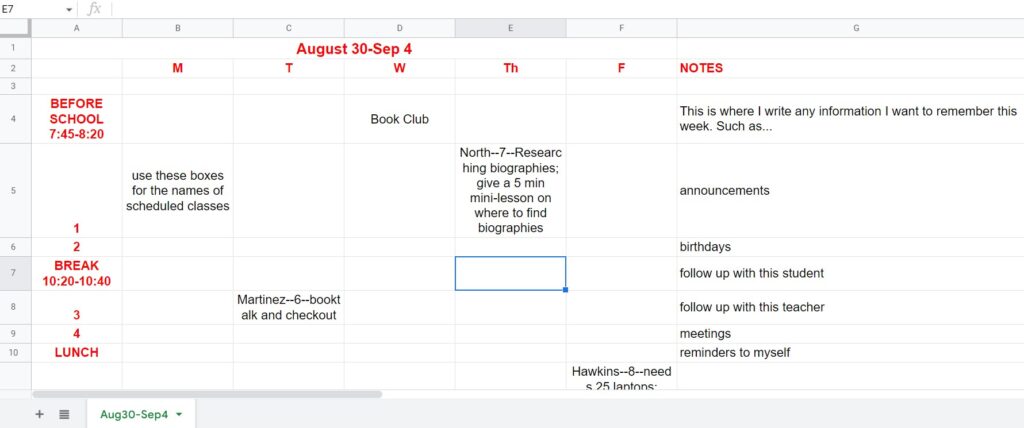
This is a blank sample of one of my Google Library Calendars. I used this one for both middle school and high school libraries. Clicking the link will ask you if you want to make a copy in your Google Drive. You will click “Make a copy.” This will enable you to edit the calendar to suit your own school.
My Google Library Calendar is very simple, but that’s why I love it! Use the tabs at the bottom to create sheets for all the weeks of the school year.
This library calendar was only for my eyes. This was not on any school-wide calendar. This is what I used as my personal planner for the library.
I also know several librarians who swear by this library planner sold by Staying Cool in the Library on TPT. I have not personally used this calendar, but if you want to buy a digital library planner, you might check into that.

NEW SCHOOL LIBRARIAN TIP #5: FIND A MENTOR.
Chances are, your school is located within a school district or other network of related schools.
You are going to have lots of questions, and it is important that you have someone you can discuss these with.
Pick a school librarian nearby, preferably in your school district, and reach out. Send an email, call, schedule a short visit (bring cookies!). If the person you picked doesn’t seem receptive (they are busy; it’s probably not personal), just pick someone else.
Do not wait for the district to assign you a mentor or for someone to approach you. They won’t.

NEW SCHOOL LIBRARIAN TIP #6: INVESTIGATE YOUR LIBRARY’S COMPUTERS AND PRINTERS.
What do you have in the library? Are you responsible for the maintenance, checkout, and troubleshooting of these items? Are they currently hooked up? Do they work? Do they need any maintenance, and if so, are you responsible for making that happen? Can the computers be used to search the library catalog? How are the computers used within the school?
If you are responsible for laptop trolleys or a library computer lab, start thinking about how you want to schedule their use. Is there already a system in place?
Like checkout, some teachers will want to claim computer lab or trolley use pretty early in the year, possibly even before school starts. I have been in charge of both a lab and trolleys, and let me just tell you right now, you will go nuts if you don’t have a reliable, consistent system for booking. Find out what’s been done before and how it worked or didn’t work.
Computer booking can be a very touchy issue, and it will drive you crazy every now and then, even with the best booking system in place. Check out my post on 22 tips to help you manage computer labs and trolleys.

Save your sanity!
Newman on Seinfeld says postal service workers go crazy “because the mail never stops. It just keeps coming, and coming, and coming, there’s never a let-up. It’s relentless.”
Two things in the library are like Newman’s mail:
1. Books and shelving! There are ALWAYS more books to shelve. Even in the summer when school is out, there will be more books.
2. You will get constant questions about library procedures, logins, and other how-to’s. It’s part of the job, but like Newman’s mail, it can be “relentless.” I’ve actually been asked for login info in the bathroom. The bathroom, y’all.

NEW SCHOOL LIBRARIAN TIP #7: EXAMINE YOUR LIBRARY LAYOUT.
For three of of the five libraries I’ve worked in, I was surprised at how unusable my existing presentation area was when I first started there.
As an example, at one school, there was a screen, but it was so high up that I could not reach it to pull it down. It appeared to have had a remote control at one time, but no one knew where it might be.
I dug up a computer projector in the library office, but no electrical outlets existed where I needed them. I had no cart for the projector, so I had to place it on top of a nonfiction shelf. There were cords dangling everywhere because I had strung extension cords across the library due to no outlets.
Then, there was no audio available, so I had to add even more cords to set up speakers.
Once I got the projector going, it became clear that there was way too much natural light in the area. After about 9am, the sun streaming in from our skylights and two walls of windows completely drowned out the projected image.
What a mess!
Within a few months, I had experimented with different areas of the library to combat that bright natural light. The solution came in my asking for (and getting!!!) a 70″ flatscreen on a cart that would be permanently housed in the library. It had its own speakers, and natural light didn’t obscure the image. If your area doesn’t work no matter what you try, speak up! It turned out that my school just happened to have that beautiful flatscreen sitting in storage. It was still in the box!
One school had a screen, but it was on the computer lab side of the library, not where I would be teaching lessons. I requested a screen for my lesson area, and I did get one. Too bad it was way too small for the large area I was presenting in. It looked like a postage stamp. I requested and got a computer projector, but I ended up buying my own audio speakers. The computer speakers just were not intended to be heard in a large space like that.
Another school had a fantastic presentation area with a large screen AND a projector, but the huge windows had no coverings to darken the room. This was in sunny Texas, so only my first class actually got to see any presentations or videos on my screen. Even on a cloudy day, the projection was almost invisible.
When setting up your library, you should have a designated space for:
- story time (PreK-Grade 2)
- teaching/presentation area that includes enough tables/chairs for an entire class to sit comfortably, a presentation screen, computer or laptop connections, speakers (Grades 2+)
- study areas–these are tables where students can work individually or in groups (all grades, but especially Grades 2+)
- independent reading areas with comfy and flexible seating areas
- library catalog search stations
- circulation desk–needs at least one computer, barcode scanner or reader
- book return–ideally, near the main entrance and/or circulation desk
- optional, but so nice to have–a makerspace area (large table with chairs) and a place to store supplies
The photo is a little blurry, but this is my current presentation area:

NEW SCHOOL LIBRARIAN TIP #8: REVIEW EXISTING CIRCULATION POLICIES.
This is another question you will hear frequently from parents and teachers.
What is your library’s checkout period?
How many books can students, teachers, and parents check out at one time?
What happens when books are late? Damaged?
Unless you are starting a brand-new library, you should be able to find these policies on the school or district website. If not, ask other librarians in your district or even your teachers/admin what circulation policies they would like to see in the library.

NEW SCHOOL LIBRARIAN TIP #9: ATTEND DEPARTMENT MEETINGS.
To go to department meetings, you need to simply ASK. The vast majority of teachers will be thrilled to have you at their department meetings! Attending these meetings regularly shows that you care about what’s happening in the classrooms and that you see the library as an extension of the classroom.
You don’t have to say anything much at the meeting; in fact, the less you say the better. Go to listen, to take notes, to learn who’s who, to introduce yourself. Listen well, and you will learn much about what the teachers need from the library and what you can do to support them.

NEW SCHOOL LIBRARIAN TIP #10: JOIN LIBRARIAN GROUPS!
It’s so easy to feel all alone in the library. If you are feeling that way, you are in good company. I certainly felt it, especially when I was new in my school. I actually been the librarian in five different school libraries, so I’ve been the new girl five times! It is never easy.
The good news is that there are loads of supportive groups for new school librarians. Here are a few of my favorites (I’m in all of them):
- The School Librarian’s Workshop
- TPT Resources for School Librarians
- School Library Media Ideas
- Monthly Library Challenge
- School Librarians’ Book Club
If you are a reader (or want to be!), the last group, School Librarians’ Book Club is my group! I started this group early in the Pandemic as a way to connect with other librarians over reading. As of June 2022, we are over 2300 members worldwide. In the group, we’ve done Bingo reading games (with prizes), but mostly, we just love to talk about good books we’ve read. Librarians serving all grade levels are welcome, including library students and retired librarians.
The Monthly Library Challenge group is also mine. As of July 2022, it is in a revamp after about 18 months of my retiring the group. I am currently working on redesigning Challenge #1 (Library Book Challenges) to be a self-paced challenge.
If you are looking for an email listserv, try LM_Net. This is a gigantic, free email listserv of all types of librarians across the globe. It’s been around forever–at least since I started my LMS in 2004. Topics of discussion range from circulation policies, copyright questions, curriculum, IB support, cataloging, bibliographies, book reviews, job postings, and more. Joining is as simple as sending a blank email, and you can choose how many emails you receive.
A word of caution: If you choose to receive all LM_Net emails, you may get a lot of email every day. It’s not as many emails as it use to be, as many of these conversations have gone to social media groups rather than by email.
I probably receive 5-10 emails every day from LM_Net currently. I enjoy my LM_Net emails now, but when I was a new librarian, I found the full listserv to be so overwhelming that I canceled my service for several years. I advise new school librarians to start with the digest version, which will limit the number of emails you receive while still allowing you to post questions to the group.
I am a member of all the groups I listed above. You will get lots of support and answers to your questions, and you’ll probably make some new friends in the process. Don’t be shy–we want to help!

Start the new year with something fun!
This library scavenger hunt is perfect for Back to School, and everything is all done for you! It’s an easy, fun way for students to independently explore the library while locating important items that they will need regularly throughout the school year.
View the Library Orientation Scavenger Hunt

